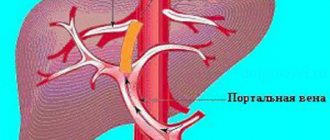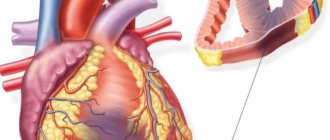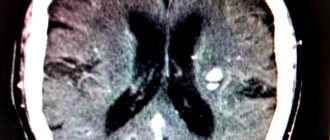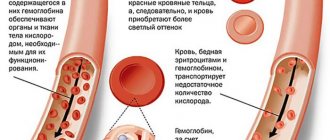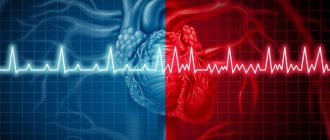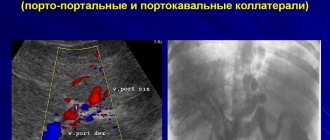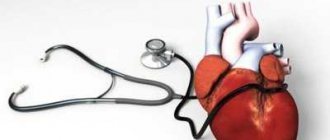What it is?
The brain is a neural network that propagates impulses of a wave nature. An EEG (electroencephalogram) allows you to record outgoing waves. Indicators of electrogenesis help to learn a lot about the physical and mental state of the patient.
The rhythm of brain activity is heterogeneous. Taking into account the frequency and amplitude of vibrations, the following are distinguished:
- alpha waves (frequency 8 – 13 Hz, amplitude 25 – 95 µV) are recorded in a healthy person, spreading mainly to the occipital and parietal areas;
- beta waves (14 – 30 Hz, 3 – 5 µV) become pronounced during intense intellectual and physical work, as well as with irritating effects on the senses;
- theta waves (4 - 8 Hz, 25 - 35 μV) are emitted by the hippocampus, observed in children 5 - 6 years old, and in adults during deep sleep and in a state of coma;
- delta waves (1 – 3 Hz, 20 – 40 µV) are typical for a newborn baby; in an adult, they are observed during sleep.
There are other types of waves, but it is the ones listed above that make it possible to identify diffuse pathologies of the brain on an encephalogram.
What is EEG
“Communication” of neurons occurs through impulses. Diffuse changes in the BEA of the brain indicate improper organization of communication or its absence. The difference in biopotentials between brain structures is recorded by electrodes that are attached to all main areas of the head.
The resulting data is printed on graph paper in the form of multiple electroencephalogram (EEG) curves. A small difference between the measurement results and the normal value is called mild diffuse changes.
There are factors that may distort the results of the study. Doctors should definitely take them into account:
- general health of the patient;
- age group;
- the examination is done in motion or at rest;
- tremor;
- taking medications;
- vision problems;
- consumption of certain foods;
- last meal;
- cleanliness of hair, application of styling products;
- other factors.
EEG provides a unique opportunity to evaluate the functioning of individual parts of the brain. Low vascular conductivity, neuroinfections, and physical injuries cause diffuse changes in the brain. Electric sensors are capable of recording the following rhythms:
- Alpha rhythm. It is registered in the area of the crown and back of the head in a calm state. Its frequency is 8-15 Hz, the highest amplitude is 110 μV. Biorhythm rarely appears during sleep, mental stress, or nervous excitement. During menstruation, the levels increase slightly.
- The beta rhythm is the most common rhythm in adults. It has a higher frequency than the previous type (15-35 Hz) and a minimum amplitude of up to 5 µV. However, during physical and mental stress, as well as when the sensory organs are irritated, it intensifies. Most pronounced in the frontal lobes. By deviations of this biorhythm one can judge neuroses, depression, and taking a number of substances.
- Delta rhythm. In adult patients it is recorded during sleep, but in some people during wakefulness it can occupy up to 15% of the total impulse volume. In children under one year of age, this is the main type of activity; it can be recorded already from the second week of life. Frequency – 1-4 Hz, amplitude – up to 40 µV. These indicators allow you to determine the depth of the coma, suspect the effects of drug use, the presence of a tumor and the death of brain cells.
- Theta rhythm. Dominant rhythm for children under 6 years old. Sometimes it occurs later in life, but only in dreams. Frequency 0 4-8 Hz.
Interpretation of results
Diffuse changes in the EEG indicate the absence of obvious lesions and foci of pathology. In other words, the potentials are different from the norm, but there are no critical deviations yet. The manifestation will be expressed as follows:
- conductivity is heterogeneous;
- asymmetry appears periodically;
- fluctuations beyond the normal limits;
- polymorphic polyrhythmic activity.
The EEG may show signs of increased ascending activating influences of nonspecific medium structures, which indicates physiological reactions. Most often, the range of certain types of waves is exceeded. However, to make a diagnosis of “diffuse lesion,” deviations must be present on all counts.
The waves will differ in shape, amplitude and periodicity. Rhythm is the main evaluation parameter. Uniformity allows us to talk about the coordinated work of all components of the nervous system and is the norm.
Changes in the EEG for a number of indicators can be observed in most people - caffeine, nicotine, alcohol, sedatives affect the data obtained as a result of the study, causing minor diffuse changes. A few days before the examination, it is advisable to stop using them.
What kind of diagnosis is this?
The brain is a huge collection of cells. When pathology occurs in a specific area, it is called localized. When multiple pathological foci of different sizes appear in different areas, they speak of diffuse damage. That is, with this type of disease the entire organ is captured.
The brain, like any human organ, is characterized by certain pathological phenomena. With diffuse changes in the BEA of the brain, we can talk about:
- sclerosis (increasing tissue density);
- malaria (softening and loss of tissue structure);
- inflammatory reaction;
- tumor process.
Diffuse sclerosis
This is the most common pathology presented and is manifested by tissue compaction due to insufficient oxygen supply. The cause may be impaired blood circulation and the development of diseases due to which oxygen is delivered in insufficient quantities.
The most common provoking diseases are:
- hypertension;
- anemia;
- heart muscle failure;
- atherosclerosis of the carotid artery.
The listed pathologies are diagnosed mainly in elderly people; in the absence of timely and adequate treatment, they lead to the occurrence of diffuse sclerosis.
Provocateurs of sclerosis are pathologies not associated with oxygen deficiency: liver and kidney failure. They cause toxic damage to brain tissue, as a result, dead areas become denser or cysts form.
Another factor leading to diffuse sclerosis is improper functioning of the immune system. The myelin sheath, which covers the neuron, acts as a biological insulator. Immune agents attack the insulating layer, causing neurological symptoms. This is how multiple sclerosis develops, diagnosed in young patients.
Encephalomalacia
The brain tissue contains a large amount of fluid. When the cells die, wet necrosis is observed, the main symptom of which is the appearance of softened lesions. When the process affects multiple areas of the brain, they speak of diffuse encephalomalacia. At the final stage, sclerosis occurs or cysts form.
Diffuse softening is provoked by various factors that affect the entire brain. That is, they cannot be injuries and strokes that lead to focal changes. But there may be:
- infections;
- edema;
- suffered clinical death.
During an inflammatory reaction triggered by an infection, the immune system tries to block the spread of the pathogen. The result is the appearance in the inflamed brain of areas of dead tissue containing a purulent mass. Often the process ends in death, but with proper therapy, regeneration of brain structures is possible. Dead neurons are not restored, but their function is taken over by surrounding cells.
Diffuse tumors
A tumor is a pathology of focal type. Therefore, we can talk about diffuse damage only when metastases penetrate the brain.
Metastasis is the movement of malignant cells with lymph and blood. Most often, transfer to brain tissue occurs from the pulmonary system and prostate gland. When the supply of metastases is abundant, they speak of a cerebral extent of damage. Surgical intervention in this case is useless.
Stages of diffuse changes in the pancreas
There are four stages of the pathological condition.
1. There are changes, but they are insignificant: there are no symptoms, the number of transformed cells is small. The changes are temporary and are caused by inflammation, unbalanced nutrition, nervous stress, and certain medications.
2. Moderate changes: moderate parenchymal changes, symptoms may be absent; Ultrasound shows swelling of the gland. The condition is provoked by inflammation, pancreatitis, diseases of the duodenum, and gall bladder.
3. Unexpressed changes: gland damage is discovered suddenly when an ultrasound of the digestive system is performed. There are no signs of gland disease. The pathological condition is genetically determined or caused by infection.
4. Pronounced changes: severe changes in the parenchyma caused by pancreatitis. Organ dysfunction causes severe pain.
After an ultrasound, an additional examination is prescribed to determine the cause of the disease, the stage of development of the pathology, and then treatment options are selected.
Causes of diffuse changes
The pathologies described above do not arise on their own. They are usually triggered by injuries or diseases accompanied by disruption of intracellular processes and weakening of connections between neurons.
The biorhythms of the brain are distorted when:
- Head injuries. Moderate diffuse changes are usually observed with concussions, while severe traumatic brain injuries lead to significant distortion of impulse indicators.
- Inflammatory neuroinfectious diseases: encephalitis, meningitis, myelitis, arachnoiditis and their mixed variations. When the spinal trunk and subarachnoid space in the brain tissue are damaged, metabolism deteriorates and the circulation of cerebrospinal fluid in the ventricles is disrupted. The white matter swells, and scars form in areas of damage. On the encephalogram this is manifested by irritative changes in the bioelectrical activity of the brain: high-frequency and high-amplitude beta waves are observed.
- Atherosclerosis and other vascular diseases accompanied by deterioration of vascular conductivity. Moderate and weak diffuse changes in bioelectrical activity are observed in the initial stages of pathologies. In the absence of therapy, neural conduction deteriorates, and the distortion of indicators on the encephalogram becomes more pronounced.
- Radioactive exposure and chemical intoxication. Radiation negatively affects the condition of the whole organism, but especially the bone marrow and brain; failures of the BEA of the cortical zone are noted. After exposure to radiation and poisoning by toxins, a person loses the ability to lead a full life.
Diffuse changes due to trauma
During a concussion, axons, the long processes of neurons, can be severed. In this case, the diagnosis is diffuse brain injury. A characteristic symptom is loss of consciousness.
The longer the unconscious state, the higher the likelihood of subsequent disability or death.
When the moving parts of the brain are displaced, the fixed elements become twisted. And even with a slight shift of the cerebral area, complete or partial destruction of the axons is possible. A similar process can affect the capillaries that supply food to the frontal region and cortex. The result is diffuse tissue death, which makes the diagnosis of pathology more difficult.
Diffuse changes in biopotentials
Deviations in brain function are associated with localized or diffuse damage. In the second case, it is problematic to accurately determine the source of violations.
Such changes are called diffuse.
With focal lesions, their location is usually easy to determine. For example, problems with balance and severe nystagmus are symptoms of cerebellar damage.
Diffuse mutations can be diagnosed using two methods:
- Neuroimaging – MRI, CT. Tomograms make it possible to examine the thinnest sections of the brain in all planes. This method is good for diagnosing the consequences of atherosclerosis and vascular dementia. Such abnormalities with high blood cholesterol levels can be detected even when memory problems have not yet manifested themselves.
- Functional – EEG. Electroencephalography allows you to obtain indicators that are a quantitative characteristic of brain function. It helps diagnose epilepsy before seizures occur. Epilepsy is always accompanied by diffuse changes in BEA of a specific nature, causing seizures. The diagnosis must indicate their degree: mild, severe, moderate. Even completely healthy people are diagnosed with a mild degree.
There is no need to worry about this - the word “healthy” is not in any EEG report. The entire cortex undergoes diffuse changes, but this does not indicate the presence of local damage.
The main symptom of epileptic activity will be an anomaly of the delta rhythm, periodic tracing of peak-wave complexes. Only a neurophysiologist can issue a correctly deciphered EEG conclusion, since extensive changes in brain activity may not be accompanied by other signs of epilepsy.
Then the doctor talks about “the interest of the middle structures” or uses other similar vague formulation. This does not mean anything, since the EEG only makes it possible to confirm or exclude epilepsy. The absence of epileptic activity is indicated by “vague” diagnoses.
Significant diffuse changes are the result of the appearance of scar tissue, inflammatory processes, swelling, and death of brain structures.
Connections are disrupted in different ways across the surface of the brain.
Functional version of changes
Functional changes appear when the functioning of the hypothalamus and pituitary gland is disrupted. They pose a great threat in the short term, but prolonged exposure leads to irreversible consequences. The irritative nature of changes is often associated with cancer. Lack of proper treatment leads to a deterioration in the general condition.
The reasons that caused the change in biopotentials can also manifest themselves in a number of symptoms. At the initial stage of the disease, minor dizziness appears, but later seizures are likely.
Increased bioelectrical activity of the brain leads to:
- decreased performance;
- slowness;
- memory disorders;
- mental disorders: low self-esteem, indifference to previously interesting things.
Neurological signs develop:
- muscle spasms;
- headache, dizziness;
- deterioration of vision and hearing.
Deep diffuse changes in the brain indicate a tendency to seizures.
A slight change is pronounced when:
- softening and thickening of tissues;
- tissue inflammation.
General cerebral changes in the bioelectrical activity of the brain are noted when:
- encephalitis;
- meningitis;
- atherosclerosis.
With diffuse glioma, a number of changes can be seen on the EEG. It takes 6-12 months to restore the natural functioning of neurons.
Symptoms
Changes in the BEA of the brain immediately affect the physical and mental state. A mild to moderate level of tissue biopotential impairment is manifested by:
- headaches;
- regular fluctuations in blood pressure;
- dizziness;
- sudden changes in emotional state, hysteria;
- problems with memory and performance;
- convulsive conditions.
Moderate and strong changes in BEA, expressed by a slowdown in the background frequency, signal the onset of epilepsy.
Diffuse changes in biopotentials and their symptoms
Changes in the biopotentials of the brain can significantly worsen the patient’s life.
In the first stages, mild symptoms of dizziness occur, but then it can progress to seizures. Symptoms of excitation of brain activity are manifested in the following:
- Decreased performance;
- Difficulty switching between different activities (slowness);
- Absent-mindedness, it becomes difficult for a person to remember any information;
- Psychological disorders (deterioration of self-esteem, indifference to many activities in which there was previously a certain interest).
This pathology also includes general cerebral neurological symptoms.
- Headaches, dizziness, muscle spasms.
- Decreased visual function, impaired sense of smell and taste.
In rare cases, against the background of diffuse changes in the brain, dysfunction of the diencephalic-stem structures appears; in this case, the patient complains of deterioration in health, which is accompanied by dizziness and other pathological conditions. If the diffuse changes are significant, this indicates that the person is prone to seizures.
The danger of changing BEA
With moderate manifestations, altered bioelectrical activity does not aggravate the body’s condition. But disorganization of the system after some time necessarily develops into dangerous pathologies.
Sometimes, together with dysrhythmia, a disturbance in the functional state of the thalamus and hypothalamus is detected. This leads to the development of diencephalic syndrome, in which neurological, endocrine, and metabolic pathologies are recorded: the functioning of the thyroid gland, heart and blood vessels, digestive organs, and reproductive system is disrupted. The functioning of the regulatory system responsible for maintaining normal body temperature is disrupted. Depression, insomnia, and uncontrollable mood swings occur.
In a child, a convincing violation of impulse patency can cause serious psycho-emotional disorders, problems with motor skills, and developmental delays.
General symptoms
The problem is that the condition in question in the vast majority of cases occurs without any symptoms.
The following symptoms are very rarely observed:
- minor pain in the right side of the body under the ribs;
- you can feel the heaviness there;
- the skin around the eyes and their mucous membranes turn yellow.
Sometimes the pain radiates to the right forearm.
Diabetes mellitus is often the culprit of diffuse changes. In this case, the liver enlarges in all lobes, and the echogram also reveals:
- heterogeneity of structure;
- smoothness of blood vessels;
- increased echogenicity of tissues with noticeable attenuation deep in the organ.
Diagnostics
Mild imbalance of brain BEA is detected by several methods. Applicable:
- taking anamnesis and examining the patient;
- electroencephalography;
- Magnetic resonance imaging;
- angiography (for atherosclerosis).
The patient is sent for an MRI if increased electrical activity is detected. It indicates the presence of pathology, which will be noticeable on a tomographic image.
Diffuse changes affecting, in addition to the liver, other organs
As you know, all organs involved in the digestive process are connected into a single system by ducts. And this, in turn, means that a functional disorder that has arisen in one of them will ultimately affect the work of the other.
The condition of the pancreas often worsens due to:
- metabolic disorders;
- infections;
- vascular diseases.
The organ often suffers from steatosis, when dead tissue is replaced by fatty tissue. An undoubted provocateur is also pancreatitis, both acute and chronic. The destructive processes in question sometimes affect, in addition to the liver:
- spleen;
- kidneys
Decoding the encephalogram
During the session, the patient sits with a cap to which sensors are attached. They capture impulses and transmit information to paper in the form of a wave-like graph.
Moderate and severe rhythm disturbances are easily noticed by a medical specialist. He can see:
- wave asymmetry;
- disturbed distribution of alpha and beta flows;
- frequency and amplitude exceeding normal limits;
- double increase in beta waves, indicating the onset of an epileptic seizure.
During the procedure, photostimulation is performed. The normal wave rhythm should correspond to the frequency of the light flashes. It is not considered pathological if it exceeds the norm by a maximum of 2 times. But if there is a decrease in the rhythm or a significant increase, then there is definitely a pathology.
The alpha rhythm signals disturbances if:
- absent (this is an indication of interhemispheric asymmetry);
- fixed in the frontal lobe;
- interhemispheres are asymmetrical by more than 35%;
- a distortion of the wave sinusoidality is detected;
- frequency irregularity is noted (high frequency indicates head injury);
- amplitude indicator is below 25 or above 95 μV.
Violation of alpha activity in childhood signals a delay in mental development. The absence of this rhythm is a sign of the child’s dementia.
Beta waves with a high amplitude indicate a concussion, while short ones indicate an inflammatory infectious disease. In children, the rhythm indicates a lag in mental development at 15 Hz and 40 μV.
Theta waves exceeding 45 μV indicate functional impairment. Moreover, an increase in all parts of the organ is a signal of a serious pathology of the central nervous system. High frequency is a sign of a tumor. In a child, an excess of theta and delta indices in the occipital tissues indicates a delay in mental development or impaired blood circulation.
EEG can express various changes in BEA:
- relatively rhythmic activity – an indication of headaches;
- diffuse BEA in combination with generalized pathological processes and paroxysms is a sign of convulsive and epileptic seizures;
- reduced BEA reactivity indicates psychoemotional disorders.
In conclusion, the doctor may write:
- minor regulatory changes, diffuse processes in the brain parenchyma;
- residual (residual) cerebral changes;
- general cerebral bioelectrical disorientation with the inclusion of median hypothalamic structures;
- relatively rhythmic BEA, dysfunction of the median and stem structures with areas of paroxysms.
Diffuse brain changes treatment
Diffuse changes in bioelectrical activity of the brain
The human body is a complex system that works according to its own special rules and laws. It's no secret that the human brain emits bioelectric signals that “travel” through the neurons - cells - that make up our brain. Sometimes there are disruptions in the transmission of these signals to other parts of the body, which can affect a person’s well-being. These changes occur evenly throughout the brain and can affect different parts.
Symptoms such as dizziness, fatigue, discomfort, etc. appear. To determine whether diffuse changes in the bioelectrical activity of the brain have occurred, it is necessary to test the patient with an electroencephalograph. This procedure is often performed after severe injuries, meningitis, encephalitis and other diseases related to the brain to ensure that there is no developing disease.
Symptoms of diffuse changes
Problems with the brain are significantly different from diseases of other organs, and therefore their symptoms are special. Often changes in the body occur gradually, while symptoms increase. Thus, moderate changes in the bioelectrical activity of the brain mainly cause such changes as:
- decreased performance of the patient;
- the emergence of problems at the psychological level;
- inattention to detail;
- the patient becomes sluggish and finds it difficult to switch between different activities.
If a person exhibits such symptoms after an injury, an electroencephalogram should be performed to determine whether the patient's brain is exhibiting activity different from normal. It is worth noting that even the results of such a study are not always true, since some abnormalities can occur in the brain of a healthy person, and he will not suffer from characteristic symptoms.
Electroencephalogram
Conducting a study of the bioelectrical activity of the brain is absolutely painless. Electrodes are attached to the patient’s head, which record electrical activity and elementary processes in neurons.
When analyzing the results, the doctor pays attention to the frequency of vibrations, their amplitude and many other factors. In addition, to make an accurate diagnosis, a study of rhythms is required, which determines the presence of diffuse changes
This procedure also helps determine the presence of other brain diseases.
Manifestations and consequences
Diffuse changes in the brain can cause a lot of discomfort to the patient. The first signs in the form of dizziness and poor health usually appear in the initial stages. If the patient experiences more serious difficulties, headaches, and surges in blood pressure, this may indicate a tendency to epilepsy. If, during an electroencephalogram, foci of excessively high bioelectrical activity are detected, this indicates that the patient may soon begin to have seizures.
Causes of diffuse changes
The disease can occur against the background of other health problems, and develop as a result of previously suffered:
An electroencephalogram can show polymorphic activity and pathological fluctuations that have any deviations from the norm. An accurate diagnosis can only be made if all these signs are present. They can also be directly related to damage to the pituitary gland and hypothalamus.
Diffuse changes after injury
Sometimes the disease manifests itself as a consequence of head injuries and severe concussions, which can cause serious problems. In such cases, an electroencephalogram will show changes occurring in the subcortex and brain. The patient’s well-being will depend on the presence of complications and their severity. Mild diffuse changes in the bioelectrical activity of the brain usually do not cause a noticeable deterioration in health, although they may cause slight discomfort.
Diagnosis and treatment
A diagnosis that is scary at first glance will actually not cause much harm to the body if you pay attention to the problem in time. This is a fairly common disorder that often occurs in children, but it does not affect the main systems of the body.
It is possible to completely get rid of diffuse changes in the brain within just a few months, or in difficult cases – a year. Restoring normal brain activity is a top priority and cannot be delayed, since without treatment complications may arise that will lead to serious and irreversible consequences.
Therapy
Diffuse brain activity disorder should be treated only in a medical facility. The therapeutic plan is organized taking into account the cause of the BEA distortion. It is most difficult to restore the brain of a patient who has suffered intoxication or radiation exposure. With atherosclerosis, normalization of brain activity is possible only at the initial stage.
Drug therapy involves taking medications aimed at eliminating both the provoking disease itself and its mental, neurological, metabolic, and autonomic symptoms. Are used:
- antioxidants;
- nootropics;
- drugs to normalize metabolism;
- vasoactive medications;
- calcium antagonists to normalize cerebral activity;
- the drug "Pentoxifylline" to improve blood circulation.
Physiotherapeutic measures give good results: magnetotherapy, electrotherapy, balneological procedures. For vascular diseases, hyperbaric oxygenation (saturation of tissues with oxygen under pressure of up to 1.5 atmospheres) and ozone therapy are used.
With atherosclerosis, a change in diet is required, eliminating foods that increase cholesterol levels in the blood. If the disease is advanced, the doctor prescribes a drug from the statin group. Medicines from the fibrate category inhibit lipid synthesis and prevent the development of atherosclerosis.
In case of severe diseases, the intervention of a neurosurgeon is necessary.
Treatment measures
After receiving the results of ultrasound and other examination methods, the doctor decides on the choice of treatment tactics. Most often this is conservative therapy.
Medication support
To cure liver pathologies, the patient must be prescribed medication. Their action is aimed at stopping the progression of negative processes. This therapy includes taking the following medications:
- Plant-based hepatoprotectors. This is a treatment aimed at restoring and cleansing liver cells. Effective drugs: Gepar compositum, Karsil, Essentiale forte. Medicines are taken over a long period of time. In medicine they are considered reliable and proven.
- Essential phospholipids. They are included in medications and replace the affected areas of membranes. As a result, if treated correctly, the structure of the liver is restored, its work is activated, and complete detoxification occurs.
- Preparations of animal origin. Restore soft tissues, cleanse them and have an antioxidant effect.
- Amino acids. This is ademetionine, which takes part in the biological synthesis of active compounds and metabolizes xenobiotics.
- Antiviral and immunostimulating drugs. They are prescribed for the treatment of chronic hepatitis C. The most effective is Peginterferon, which is similar in properties to protein. The main task is to fight infections.
Some patients are indicated for treatment of diffuse liver changes with antiviral drugs.
Diet food
Patients are prescribed a gentle diet. Fatty meats, spicy foods, canned foods and smoked sausages should be excluded from the diet. You cannot cook food in rich broth.
Allowed products are dietary meat and fish, vegetables and fruits, compotes from fresh or dried fruits, cocoa, weak green tea. The main task of the diet is to eliminate dysmetabolic processes.
Folk remedies
Useful herbs in folk remedies for the progression of diffuse changes in the liver parenchyma are yarrow, milk thistle, and birch buds. Before going to bed, you can add a few dried mint leaves to your regular tea. For prevention, drink a decoction of corn silk.
You need to collect and dry the herbs yourself, or buy ready-made mixtures at the pharmacy. Apricot kernels are a good remedy for treating diffuse changes in the liver.
Prevention
To prevent pathologies leading to changes in the BEA of the brain, you should:
- Minimize the consumption of caffeinated drinks;
- give up cigarettes and alcohol;
- maintain physical fitness;
- beware of hypothermia and overheating;
- Protect yourself from head injuries.
A moderate change in BEA is a consequence of the asymptomatic development of a malignant neoplasm, so you should definitely visit a neurologist. You should not ignore the proposed therapeutic measures; it is strictly forbidden to self-medicate or use dubious folk recipes. This can lead to complications, disability and death.
Types of disease
In the process of studying pathological changes in the structure of the liver, the following types of disorders were identified:
- Minor diffuse changes in the liver parenchyma. This is a common type of disease, the degree of danger of which is determined on the basis of special studies. One of its features is disruption of the functioning of not only the liver, but also the pancreas, which is associated with the development of hepatitis, alcohol or drug use.
- Moderate diffuse changes in the liver. They occur due to poisoning, any external influences, as well as damage to the body by viruses. Disappears after taking vitamins and eliminating the source of irritation. So, if the cause of the formation of fine-grained and granular changes in the liver parenchyma was the use of alcohol, then giving it up will contribute to the rapid restoration of organ tissue.
- Severe diffuse changes in the liver. Most often they are a consequence of untreated hepatitis, cirrhosis, tumor or cyst. With diffuse changes in the liver according to the type under consideration, well-defined swelling of the parenchyma is observed.
- Diffuse reactive changes. The basic functions of the liver are disrupted, which manifests itself in the form of exacerbation of pancreatitis and negative reactions from the pancreas.
When determining the density of structural tissues, diffuse focal changes are often detected, alternating with rebuilt tissue. Such changes occur during the development of hepatitis with metastases.
Prognosis and prevention
If the liver parenchyma is changed, then the prognosis can be either favorable or not at all. It all depends on what particular disease caused this.
So, if a person leads an unhealthy lifestyle, does not follow a diet, or eats low-quality food, then by switching to a diet and giving up alcohol, he will soon forget about any troubles with the liver. The diet relieves not only the main signs of the disease, but also the causes that provoked it.
Diffuse changes in themselves are not dangerous, but for the purpose of prevention, it is recommended to regularly visit a doctor, avoid contact with any toxic substances, lead a healthy lifestyle, pay attention to the quality of nutrition and treat all diseases on time.
Changes in the liver parenchyma in a child
Reactive changes in the liver parenchyma in a child signal pathological processes in the internal organs. Signs of the disease are well expressed, changes in biochemical blood parameters are moderate . If the child is one year old or less, then there is a chance that timely treatment will allow the integrity of the organ to be completely restored.
Reactive changes in the liver in a small child indicate the development of:
- peptic ulcer,
- pancreatitis,
- intestinal pathologies,
- systemic pathologies,
- problems with the endocrine system,
- poisoning,
- thermal injuries,
- oncological diseases.
Liver problems in children may occur after taking certain medications, including those taken by the mother during pregnancy.
This is very dangerous; due to the fact that the first signs of the disease do not appear immediately or are completely absent, treatment may be significantly delayed. To prevent this from happening, children at risk are regularly examined by a doctor.
Treatment
Not knowing how to cure diffuse liver diseases using traditional methods, many patients practice treatment with folk remedies and follow a strict diet. In general, this treatment of liver diseases allows you to get rid of discomfort and external signs of the disease in a relatively short time, but in some cases it is not enough.
So, if the cause of diffuse changes is associated with infection of the body with worms, then the patient is prescribed anthelmintic drugs. For viral or bacterial infections, antibiotics and antiviral drugs are prescribed.
To restore normal liver function, patients take vitamin and mineral complexes, substances that prevent fat deposition, and steroid drugs that help normalize hormonal levels.
Timely treatment can help avoid the negative consequences of the disease. Thus, an intensive course of therapy for steatosis allows you to achieve the remission stage after 2-3 weeks.
